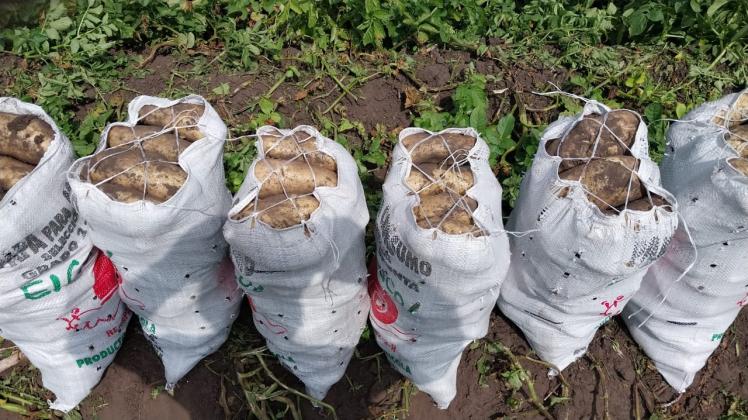Argentina: The potato, another regional economy that is falling at its worst point so far this century
The low price producers receive today is determined by a large supply of potatoes on the domestic market; these are potatoes that are not exported because they are uncompetitive abroad.

The main potato-producing countries are China, India, Russia, Ukraine, and the United States. Argentina ranks 30th worldwide. In our country, potato cultivation takes place primarily in the southeast of Buenos Aires province (Tandil, Balcarce, General Alvarado, and Lobería), where the largest cultivated area in the country is located (55%). This region is followed by the Córdoba-San Luis region (30%), Tucumán (10%), Mendoza (5%), and, finally, Jujuy-Salta and Santa Fe.
Argentine potato production is at its worst in 25 years. Producers of this staple food are also suffering from the economic policies of Javier Milei’s government.
Potatoes are the most consumed vegetable in Argentina, with a consumption of 52 kilos per inhabitant per year, of which 11 kilos are processed potatoes. In this regional economy, there are four main actors: the producer, the market, the industry, and the consumer.
Potato farmers are mostly tenant farmers, working an average of 50 hectares. Today, the production cost for potato farmers ranges from $7,000 to $10,000 per hectare, producing a crop that is a real gamble: the high production costs are due to land rental, seed, agrochemicals, fertilizers, and irrigation.
Potato production has different destinations: 70% goes to the domestic market for consumption, 25% goes to the pre-fried frozen potato industry, with only five companies absorbing the majority of production (McCain, Simplot, Pepsico, Lamb Weston and 5 Hispanos), and the remaining 5% goes to seed potatoes.
The high costs of the dollarized economy, with the most expensive diesel in the region and sky-high electricity rates, in addition to increasing the cost of primary production, have driven up the production costs of the frozen potato industry, making it less competitive in countries such as Brazil, Paraguay, Chile, and Uruguay.
The low price producers receive today is determined by a large supply of potatoes on the domestic market; these are potatoes that are not exported because they are uncompetitive abroad. This increased supply is also a result of an increase in planted area, as foreign capital has entered the sector seeking to find this crop as a safe haven in an unpredictable economy.
Today, potato producers sell potatoes for $100/kg, with a production cost of $180/kg, losing $80/kg. Consumers, on the other hand, pay between $1,000 and $1,500 per kilo.
As we can see, the National Government’s policies do not favor any link in the chain:
- With this exchange rate, the industry is not competitive in exports and has to export potatoes to the domestic market.
- The producer has high dollarized production costs, with the value of his production below cost, due to the high supply of potatoes in the depressed domestic market.
- Consumers pay 10 times more per kilo of potatoes than the price producers receive due to high storage and marketing costs.
In this scenario, the Minister of Economy’s only response is to encourage producers to borrow in dollars, just as Domingo Cavallo did in the 1990s, which led producers to the abyss.
The problem isn’t how many producers are blind, but how many don’t want to see: most of them already suffered from this plan three decades ago.
By Matías Jaúregui, Agricultural Engineer and Agricultural Producer (Tandil Area)
Fuente:




